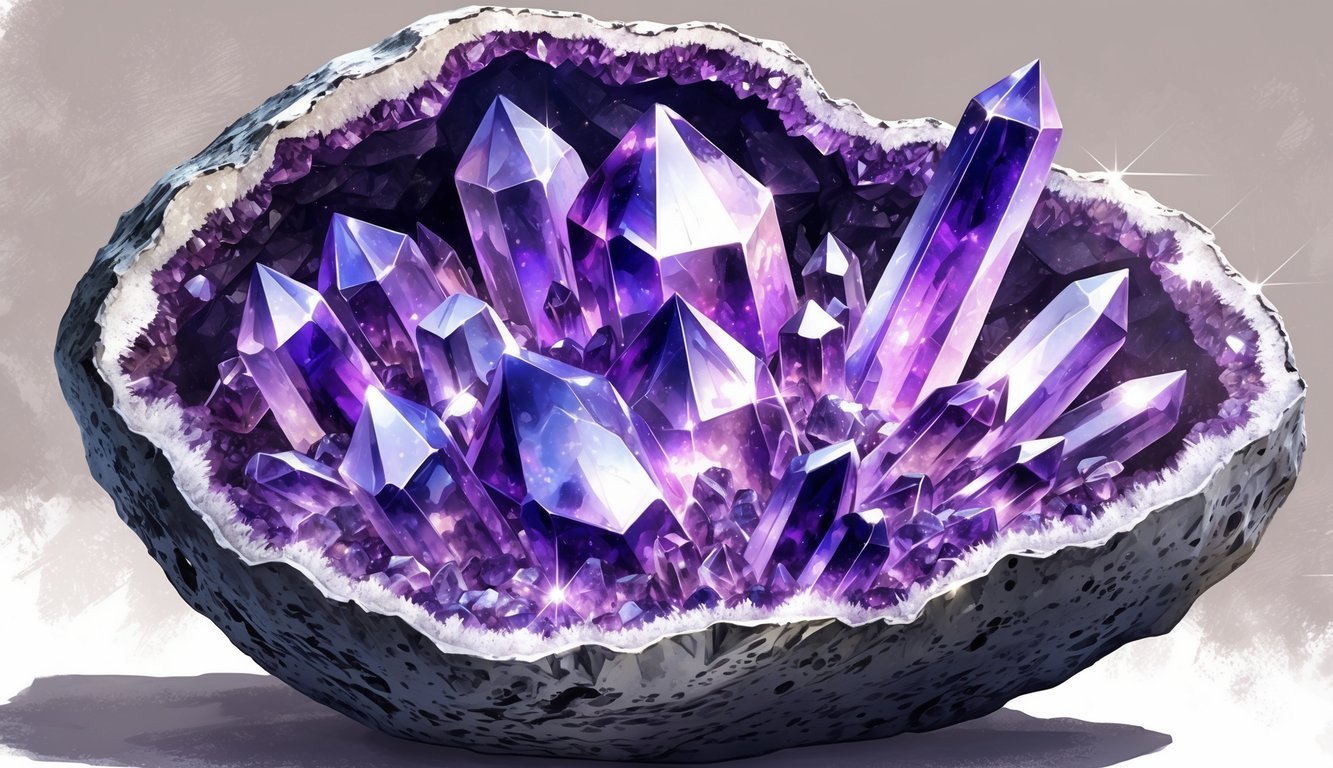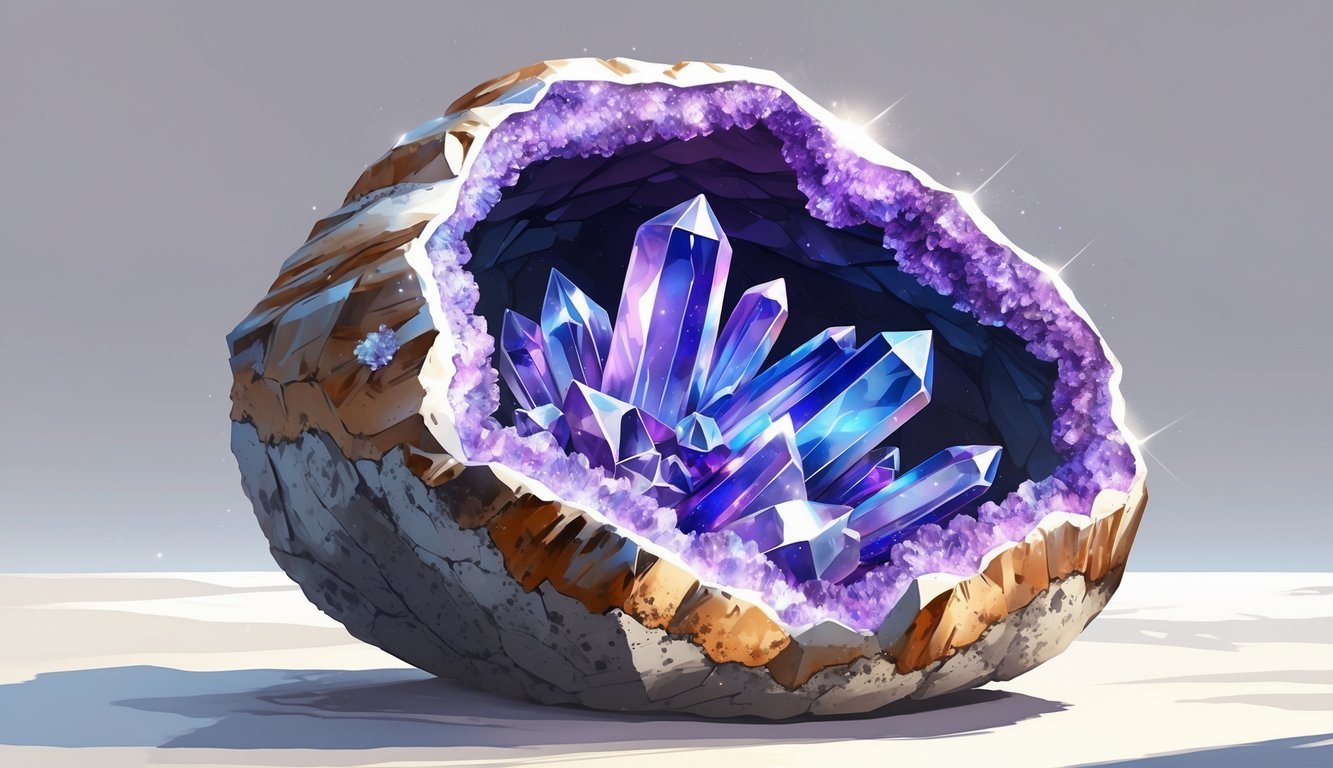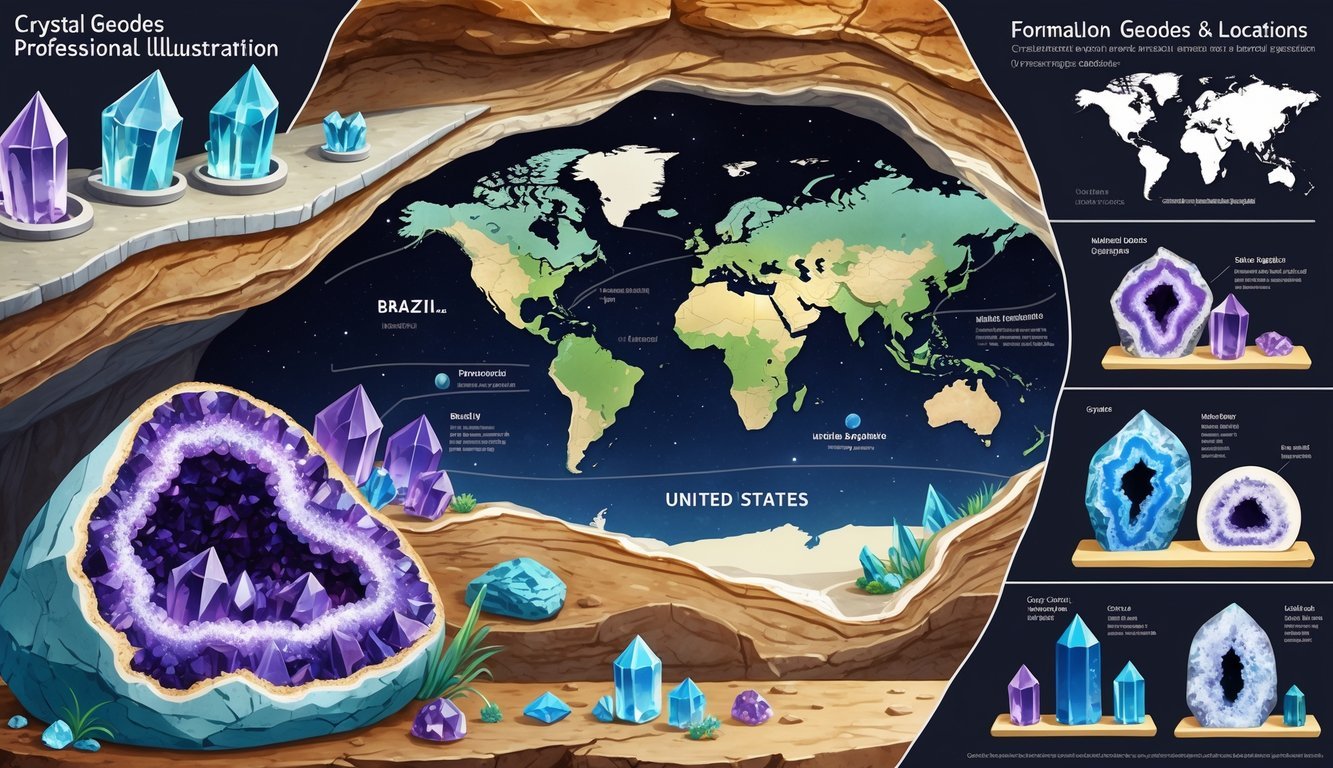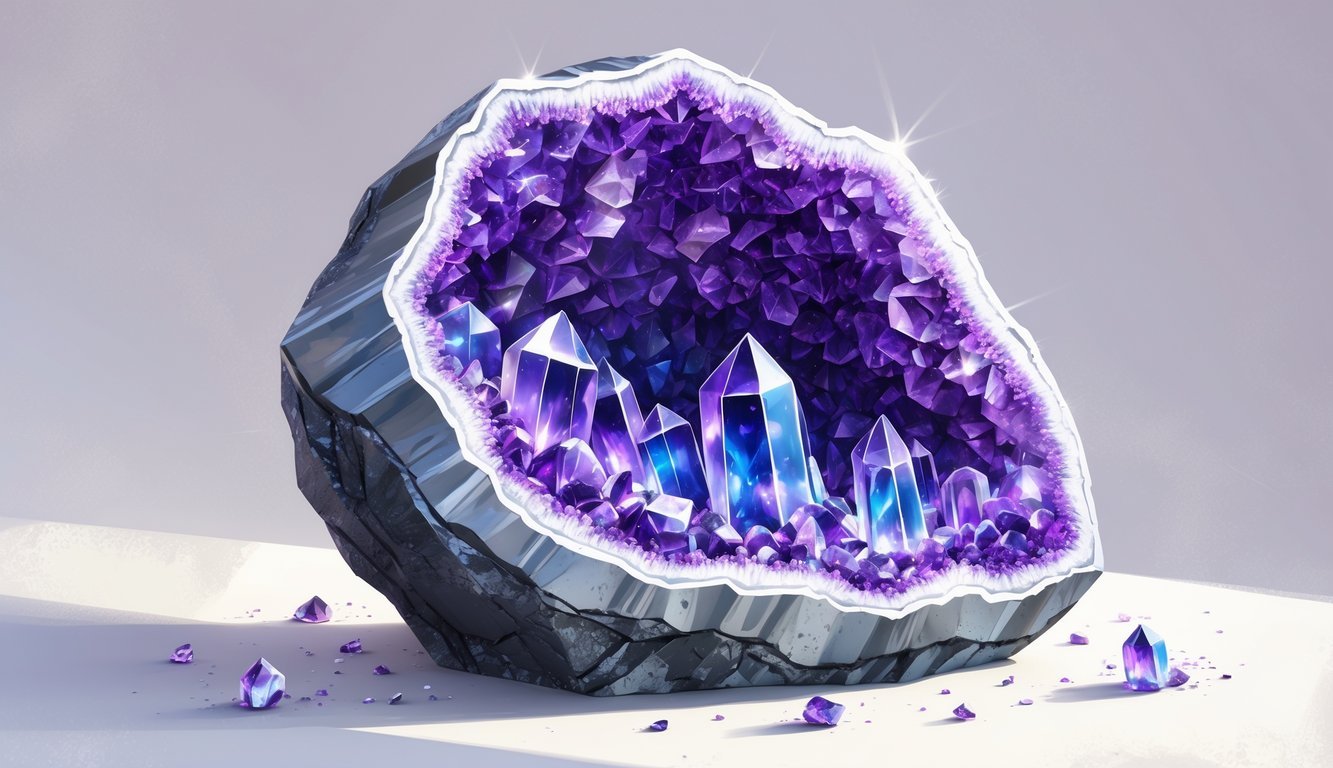PsychNewsDaily Publishers
100 Summit Drive
Burlington, MA, 01803
Telephone: (320) 349-2484
PsychNewsDaily Publishers
100 Summit Drive
Burlington, MA, 01803
Telephone: (320) 349-2484
Crystal geodes are hollow rocks filled with beautiful crystals formed over thousands of years from mineral-rich water, highly valued by collectors and nature enthusiasts.

Crystal geodes look pretty ordinary from the outside, but inside? They hide beautiful crystals that can surprise anyone. Mineral-rich water fills cavities in rocks, and over thousands of years, those minerals slowly turn into sparkling crystal patterns.
You’ll find geodes in lots of places around the world, especially in areas with volcanic or sedimentary rocks. People love them for their natural beauty, and collectors, decorators, and anyone who’s curious about nature’s underground art all seem to get hooked.
Ever wonder what makes geodes so special? Or maybe you’re curious where they come from. Stick around, and I’ll walk you through the basics—maybe you’ll see why these rocks are so treasured.

Crystal geodes look plain on the outside, but they hide amazing surprises. When you break or cut one open, you’ll find clusters of colorful minerals and crystals inside.
A geode usually starts out as a hollow, round rock, often in places with limestone or shale. Its outer layer feels rough and hides the sparkle inside. Over time, mineral-rich water seeps into the empty space.
As the water evaporates, minerals stick to the inner walls and start forming crystals. Inside, you’ll often see a lining of chalcedony, which is a type of quartz. This soft, waxy layer helps hold the crystals in place.
The crystals themselves take thousands of years to grow. They’re usually made from minerals like quartz, calcite, or amethyst. Sometimes, agate, a banded form of chalcedony, forms colorful layers inside or outside the geode.
Crystals inside geodes can vary a lot, depending on where you find them. Some of the most common types are:
People often name geodes after the main crystal inside, like agate geodes, citrine geodes, or clear quartz geodes. The crystals usually grow in clusters, so every geode feels unique—almost like opening a present.

Crystal geodes start as hollow spaces inside rocks. Minerals slowly fill those spaces and turn into crystals. You’ll spot geodes in all sorts of places—volcanic and sedimentary rocks are a good bet. People use geodes for decoration, healing, and sometimes spiritual reasons.
Geodes form when a hollow cavity opens up in rock. Gas bubbles in volcanic rocks like basalt or empty spaces left by organic material in sedimentary rocks such as limestone or dolomite create these hollows. Over time, groundwater or hydrothermal fluids loaded with minerals flow through the cavities.
Minerals settle on the cavity walls and start to crystallize. You’ll usually find quartz, calcite, or amethyst. Changes in pressure and temperature affect the size and shape of the crystals. Sometimes, you’ll hear about “thundereggs,” which are a special type of geode from volcanic ash layers.
You can find geodes all over the world. Brazil and Uruguay are famous for their huge, colorful amethyst geodes. Namibia has some rare geodes with unusual shapes. In North America, states like Iowa, Missouri, Utah, Indiana, Kentucky, and Illinois have lots of geodes, especially near old mines or caves.
Some famous spots include the Crystal Caves in Mexico, where miners dig out giant geodes. These places are rich in volcanic rock or sedimentary layers, which are just right for geode formation.
Maybe you want a geode just because it looks cool. Or maybe you believe in their metaphysical properties. Lots of people say geodes have healing energies—they might help with emotional or physical issues.
They’re also popular in jewelry. You’ll see druzy geodes polished or wire-wrapped as pendants. Some folks think geodes purify spaces and help you make better decisions. Whether you love them for their looks or their energy, geodes have a way of connecting you to something natural.

Maybe you’re wondering how to pick a good geode, what people believe about them, or how you can use them in jewelry or spiritual routines. Knowing where to buy geodes and what affects their price can help you out, too.
Look for geodes with bright, well-formed crystals inside. If you shake one, you might hear loose crystals or sand. A good geode usually feels heavier than it looks because of all the crystals packed inside.
People often say crystal geodes stand for healing, protection, and balance. Some believe they clear out negative energy and bring calm to a room.
You can slice geodes or break them into small pieces for pendants, earrings, or rings. Their natural sparkle gives handmade jewelry a unique look.
You’ll find geodes online, at rock shops, or at gem and mineral shows. Some stores focus just on crystals and geodes, so check local listings or browse websites.
Size, crystal quality, color, and rarity all affect price. Geodes with rare or bright colors like blue or pink usually cost more. Larger geodes or ones with unusual crystal shapes also tend to be pricier.
People often put geodes in meditation spaces or on their altars. They believe these stones help focus energy.
Some folks like to use geodes during healing sessions. Others carry small geodes around as a personal talisman—just in case they need a little boost.